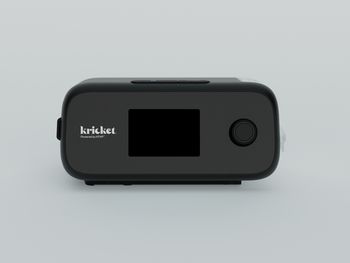
Why medical practices need to automate the prior authorization process
Benefits include streamlined workflows, faster payer approvals, fewer claims denials
The intricacies of health care management pose a constant challenge in our quest to provide optimum patient care. A significant obstacle is the
The inefficiencies of the manual approach, highlighted by denied claims due to insufficient documentation and dispersed information across systems, underline the pressing need for intelligent automation in the PA process.
The imperative of automation in today’s climate
Amid an increasingly complex regulatory environment and chronic
Proactive leaders in health care have already started to harness the power of automated PA processes, showing the industry the path to follow. The daunting pressures of today's health care climate don’t make automation an attractive proposition—they make it a necessity.
The power of automation and risks of inaction
Automation in PA is much more than a tech upgrade – it’s a transformative approach capable of delivering many benefits. These include streamlined workflows, reduced approval times, and decreased
The financial risks are significant for those who remain on the sidelines. A
Harnessing data and automation for enhanced outcomes
A deep dive into PA data reveals recurring issues contributing to denials. These can range from submission delays and inconsistencies in approval criteria to understanding payer-specific requirements. By identifying these patterns, strategic automation can be incorporated into workflows, minimizing resource allocation for managing prior authorizations and allowing staff to redirect their focus to other critical areas, ultimately enhancing patient care.
Moreover, automation's role extends beyond eliminating manual inefficiencies—it accelerates the PA process. Automating routine tasks significantly reduces administrative burdens, paving the way for quicker turnarounds and faster reimbursements.
When we bring data analysis and automation together, the results can be transformative. We can significantly improve operational efficiency, turnaround time, financial performance, and patient satisfaction. This synergy is the cornerstone of an effective PA process.
Selecting the right automation partner
Choosing a partner for automation has significant consequences. Health care organizations must find a partner who understands the intricacies of the revenue cycle and aligns with their specific needs for implementation, integration, and workflow. An effective automation partner for streamlining prior authorizations will:
- Deploy robotic process automation to ensure timely PA approval
Robotic Process Automation (RPA) deployment can be a game-changer in prior authorization. RPA bots are designed to handle routine, repetitive tasks that often require excessive human effort. These bots can efficiently gather the necessary information—such as patient details, diagnosis codes, and procedure codes—and navigate payer-specific web portals to obtain the PA, which is then forwarded to the relevant provider. - Track payer regulations for PA and update the process accordingly
To navigate the complexities of the PA process, keeping up-to-date with payer regulations is essential. Different insurers have distinct requirements for PA submission, and minor misunderstandings or oversights can lead to delays and denials. Therefore, part of the PA process involves diligently tracking these requirements and updating the process as needed. Regular review of claim denials and rejections can also provide insight into changes in payer requirements. - Provide transparency into PA denials
Transparency is vital in the realm of PAs. Providers must understand the reasons behind a PA denial to address any problems and avoid future denials. Providing clear visibility into PA denials enables staff to identify and understand common reasons for denials, make necessary adjustments to their processes, and ensure accurate, complete submissions in the future. Data from PA denials can be analyzed and used to continuously improve the PA process, ultimately leading to more successful authorizations and better patient outcomes.Streamline prior authorizations with intelligent automation
Automating PA is an investment that every health care organization should consider. As the industry grapples with rapid regulatory shifts and acute staff shortages, a tailored automation strategy is key to enha
ncing patient care and improving operational efficiency. By adopting automation, we can effectively sidestep the administrative burdens of the PA process and refocus on what truly matters: providing the best patient care.
Terri Gatchel-Schmidt is vice president, consulting at
Newsletter
Stay informed and empowered with Medical Economics enewsletter, delivering expert insights, financial strategies, practice management tips and technology trends — tailored for today’s physicians.








